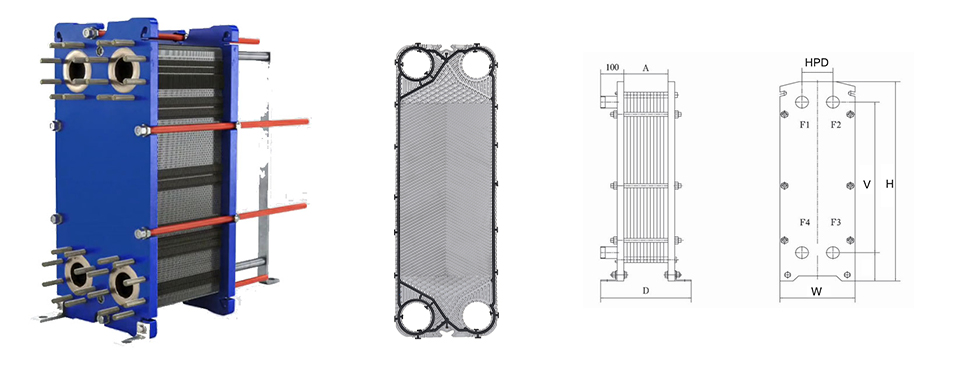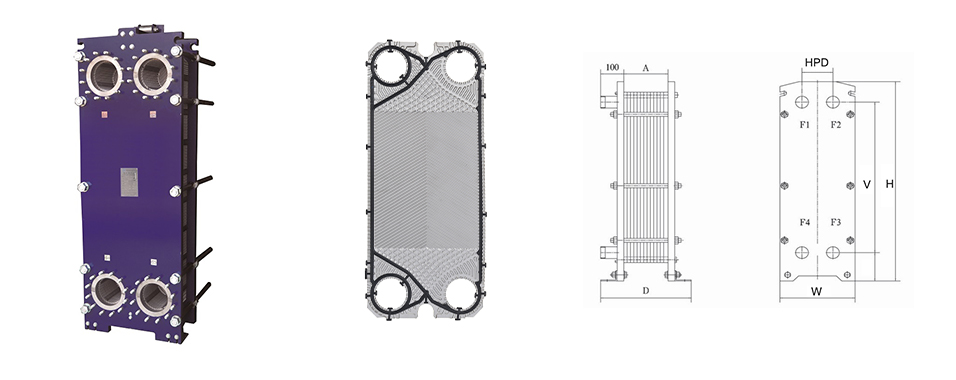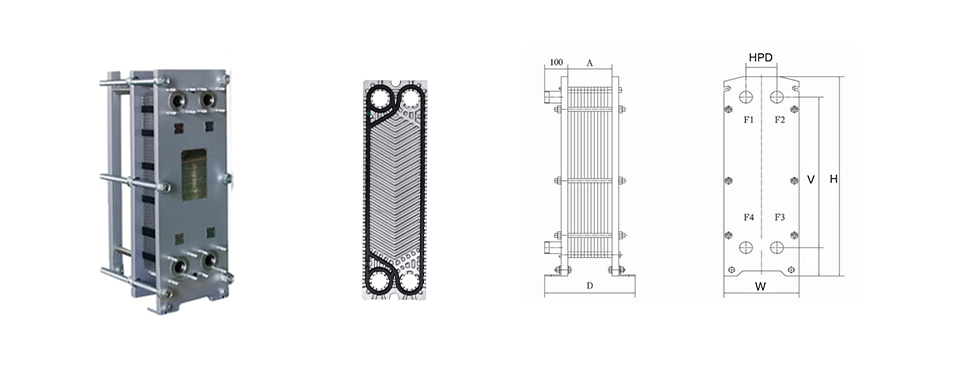Introduction to common heat exchanger cleaning methods
The heat exchanger must be cleaned due to the corrosion, erosion and fouling of the medium. Several common heat exchanger cleaning processes are listed below, and the specific implementation is as follows:
Mechanical descaling method. When the tube bundles of the shell-and-tube heat exchanger are slightly clogged or slag and fouling, stainless steel ribs or low-carbon copper discs can be used to pass in from one end and pull out from the other end to remove the slight blockage or Slag and fouling. For light and thin fouling, you can choose a special pigging brush according to the pipe diameter. Wear a thick iron wire at one end to pull the pigging brush out of the heat exchange tube. Repeatedly several times can remove the dirt or the dirt that is not tightly combined with the heat exchange tube. Accumulation of foreign objects.
High-pressure water flushing and cleaning. High-pressure water flushing and cleaning uses high-pressure water pumped by a high-pressure water pump. The high-pressure water is directly hit to the parts to be cleaned through a special cleaning gun. When the structure is hard and tight, the high-alloy nozzle can also be inserted into the pipe to use higher Generally, this method is mainly used to clean the scale layer in the tube of the shell-and-tube heat exchanger, or to flush the scale and foreign matter on the shell of the heat exchanger equipment and the surface of the tube bundle that can be extracted.
For chemical descaling, firstly, chemical analysis should be carried out on the fouling substances, and then the solvent should be used for cleaning. Generally, alkali washing is used for sulfate and silicate scales, and acid washing is used for carbonate scales. Sodium hydroxide, sodium carbonate, washing powder, detergent, etc. can be used for coking of greasy scales, and they can be cleaned in a certain proportion with water. When chemical cleaning is used, corrosion inhibitors must be considered. After chemical cleaning, add clean water to circulate and rinse several times until the water is neutral.
Mechanical descaling method. When the tube bundles of the shell-and-tube heat exchanger are slightly clogged or slag and fouling, stainless steel ribs or low-carbon copper discs can be used to pass in from one end and pull out from the other end to remove the slight blockage or Slag and fouling. For light and thin fouling, you can choose a special pigging brush according to the pipe diameter. Wear a thick iron wire at one end to pull the pigging brush out of the heat exchange tube. Repeatedly several times can remove the dirt or the dirt that is not tightly combined with the heat exchange tube. Accumulation of foreign objects.
High-pressure water flushing and cleaning. High-pressure water flushing and cleaning uses high-pressure water pumped by a high-pressure water pump. The high-pressure water is directly hit to the parts to be cleaned through a special cleaning gun. When the structure is hard and tight, the high-alloy nozzle can also be inserted into the pipe to use higher Generally, this method is mainly used to clean the scale layer in the tube of the shell-and-tube heat exchanger, or to flush the scale and foreign matter on the shell of the heat exchanger equipment and the surface of the tube bundle that can be extracted.
For chemical descaling, firstly, chemical analysis should be carried out on the fouling substances, and then the solvent should be used for cleaning. Generally, alkali washing is used for sulfate and silicate scales, and acid washing is used for carbonate scales. Sodium hydroxide, sodium carbonate, washing powder, detergent, etc. can be used for coking of greasy scales, and they can be cleaned in a certain proportion with water. When chemical cleaning is used, corrosion inhibitors must be considered. After chemical cleaning, add clean water to circulate and rinse several times until the water is neutral.








